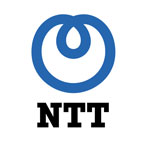
When I moved in-house around 20 years ago I knew I wanted to work in the IT industry. The pace of change made it the most exciting place for a lawyer to work, and I have been in the front row ever since. While many of the business technologies we use on a daily basis have evolved rapidly, the technologies enabling support functions have been much slower to take off. Until now.
Onboarding legal tech used to be a matter of trial and error. The technologies on offer felt like a solution looking for a problem, and while there was a lot of interest surrounding legal tech it was difficult to make a concrete use-case for what was available. In the last few years, new systems for contract management and document discovery have appeared on the market and are now extremely helpful for in-house legal teams.
These improvements have little to do with technological development – after all, similar systems have been available to businesses for many years – they result from the growing recognition in-house counsel are a viable market for software vendors’ products services. With the growing economic significance of in-house lawyers as a consumer group, the market has finally moved to develop solutions that meet our needs, which are very different to those of law firms.
For in-house lawyers technology has to be easy to use. It needs to work with other systems and align with existing work workflows, and it has to give functionalities that are fit for purpose. All this needs to be backed up by high-levels of support in terms of training and other assistance. In short, in-house lawyers are not looking for off-the-shelf solutions, we are looking outcome-oriented vendors who are able to work collaboratively to meet our needs.
This collaboration needs to begin at the concept and design stage of a piece of software. Knowing the pain points GCs face, or what does and does not work within a typical company environment would help a great deal in making a system that is fit for purpose. For GCs, the price of a system is not just the cost of the license fee. It is also the time spent customising the software, the effort that goes into implementing the software, and the change management and project management requirements that come with it. We have gone through this cycle many times in the past, so we are extremely aware of it.
At all large businesses the legal team works in an ecosystem. This means when we are purchasing external legal tech, we are looking for products that can scale out. Contract management tools, for instance, can be used for other things. That makes a huge difference in terms of bang for your buck. We are really looking to leverage company-wide platforms.
The other big development I have seen in the legal tech space is a growing awareness among GCs that they need to take control of their team’s transformation. Legal tech is not always about finding external solutions. Often, it is just as important to look within. Currently we are looking at leveraging company-wide platforms as a set of collaborative tools that we can use, ideally with no need to integrate any foreign software or systems into our own ecosystem. We are also leveraging enterprise systems and customising them for our requirements. These systems may not have been designed to meet our needs, but they can nevertheless be extremely useful. It is all about being creative and experimenting with the technology you have available to you.
In the same vein, we have also developed tools within our own function. For example, my in-house legal team created a contract risk scoring tool three years ago. We use it to provide a numerical risk rating to contracts, assessed against our internal legal risk policy and tolerances. We have also built in a traffic-light feature based on the ratings. The tool has since been incorporated into the region’s enterprise deal assessment system, which takes into account assessments from other functions as well.
With all these developments, the next few years look set to a transformational period for legal teams. Legal tech will not just change how fast we work, but what we work on. As technology matures, routine and repetitive work can effectively be automated. This frees up bandwidth for internal lawyers to do more complex work that requires creativity. It will allow us to spend much more time on things like negotiations, strategic planning and resolving complex matters. That is cause for optimism. Perhaps technology will help solve the modern in-house counsel’s struggle for sufficient bandwidth.